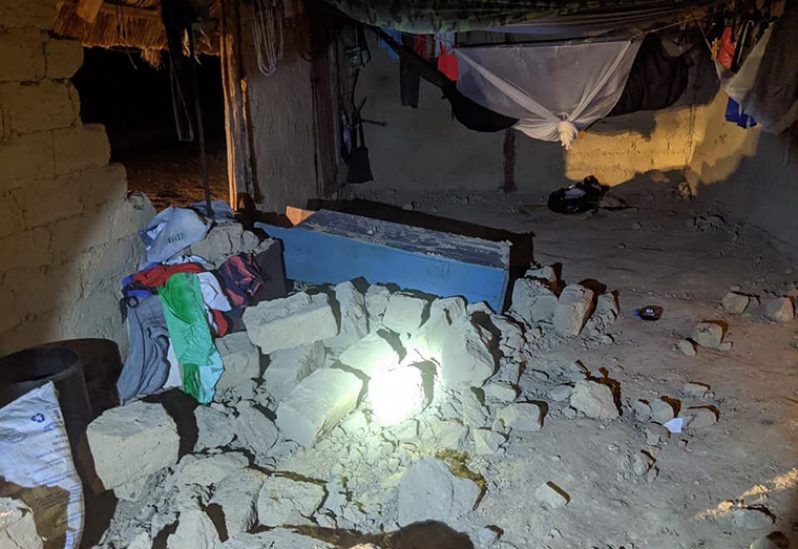— expert says ‘aftershocks’ are normal, unlikely that oil exploration caused earthquake
By Vishani Ragobeer
THOUGH a 5.7 earthquake struck Guyana and parts of Brazil on Sunday afternoon, some communities in South Rupununi, which are close to the epicentre of the earthquake, still experienced continuous tremors well into Monday.
The earthquake, which struck the South Rupununi area of Guyana on Sunday, resulted in tremors of varying intensities throughout Guyana and in Boa Vista, Brazil. The brunt of the natural disaster was felt in the South Rupununi area, where several buildings and earthen surfaces were damaged.
On Monday Regional Chairman of Region Nine, Brian Allicock, told the Guyana Chronicle that the communities of Katoonarib, Sawariwau and Aishalton were among those more seriously affected: a few houses collapsed and some roads were cracked.
“What happened [on Sunday], that lasted for quite a while in Aishalton. The vibrations, very ugly vibrations, lasted for about one minute and it got a lot of people scared and houses were damaged,” Toshao of Aishalton Michael Thomas related during a telephone interview.
He also highlighted that on Monday morning, around 06:23hrs, there was another earthquake-like occurrence that shook the community for about 12 seconds. He said individuals living in zinc-roofed houses, in particular, felt this latter occurrence.
Thomas said his community has been rattled since it is quite uncommon for an earthquake, albeit a moderate one as this, to affect the area. Even so, Aishalton has been spared from what is perhaps the most concerning activity, following Sunday’s earthquake; that is, continuous tremors, occurring at 10 to 15-minute intervals.
In the community of Katoonarib, which is approximately an hour’s drive away from Aishalton, Thomas related that there have been these intermittent tremors, which have been of much concern to the community.
Katoonarib, due to its location in the deep South Rupununi, does not have great network connectivity. The Guyana Chronicle, however, was able to confirm the constant tremors with regional officials.
In an interview with this newspaper, Research Fellow at the University of the West Indies (UWI)’s Seismic Research Centre, Lloyd Lynch, related that the occurrence of such tremors after an earthquake is normal.
In simple terms, an earthquake is caused by sudden movement of the material that makes up the earth’s crust. The shaking that is felt is caused by the energy that is released in waves which travel through this crust following a sudden release of ‘stress’ caused by the continuous movements of the earth’s tectonic plates (which are pieces of the earth’s crust).
And Lynch explained that, simply, sometimes a rupture is not complete following the earthquake. Therefore, the area experiencing the ‘stress’ would have some aftershocks spreading throughout the space.
“It’s highly unlikely that [these aftershocks] will lead to something stronger,” the research fellow noted, while explaining that such occurrences gradually lose their strength as the days go by. Nevertheless, he highlighted that the gradual decline is not an absolute occurrence; it is possible for the tremors to become stronger.
Addressing questions raised about whether it was the oil exploration offshore that contributed to the earthquake in Guyana, Lynch responded: “Guyana is new in the exploration and extraction business, so it is highly unlikely that would’ve triggered earthquakes.”
Lynch noted that Guyana is located on what is known as a stable continental region. This means that earthquakes are not expected to be frequent, devastating occurrences. But even so, he emphasised that this does not mean that Guyana is completely safe from earthquakes and that the country should ensure that it plans well for such potentially devastating occurrences.




.png)









